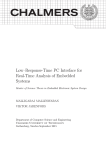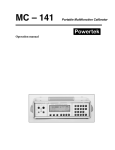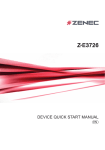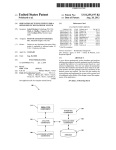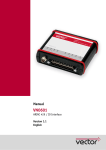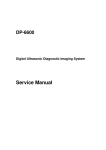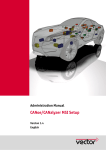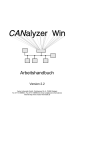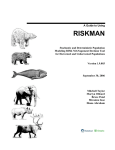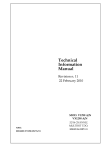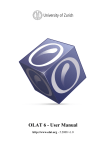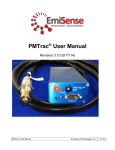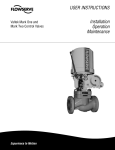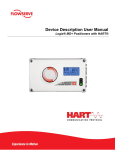Download Automated Testing of Electronic Control Units Compatibility in
Transcript
Automated Testing of Electronic Control Units Compatibility in Vehicle CAN Networks J. Novák and P. Kocourek Czech Technical University, Faculty of Electrical Engineering/Department of Measurement, Prague, Czech Republic Abstract — CAN communication is nowadays the basic way for information exchange among the Electronic Control Units (ECUs) that control particular vehicle functionality. Correct and in-time data delivery from other units is the underlying presumption of the proper ECU function. As the CAN is rather complex standard, the detailed testing of ECU behavior is necessary at all protocol layers of the communication stack. In order to simplify the testing and to reduce the human factor influence the automated test site has been designed and implemented, which realizes more than 50 physical, link and application protocol layer tests. For some of them specialized test instruments (like CAN generator or CAN trigger unit) were designed that allow influencing the communication events in real-time, as well as instruments allowing real-time simulation of complete bus traffic. The use of programmable logic for hardware implementation allows modifying instruments functionality without changes in a hardware structure. The time to run the complete test was reduced more than 10 times compared to previously used manual measurement and evaluation. The paper describes methods and their implementation used for the testing the ECUs behavior at the CAN interface. I. INTRODUCTION Each new generation of vehicles (and especially cars) uses more and more electrical and electronic equipment. To ensure both the required functionality and low price simultaneously, the distributed system concept was adopted to provide the communication path among the electronic subsystems. An example provided in [1] declares 32 ECUs and 12 CAN networks in one truck. As the electronics plays an important role also from the safety point of view, its correct behavior is required in all possible working conditions and must be appropriately tested and evaluated. The tests of electronic components can be divided into several groups, according to the development phase in which they are applied. One of them is the functional testing, focused on the accurate acquisition of input data and in-time evaluation of correct outputs used either directly for system control or as the inputs for other components in the system. It includes both the component hardware and software testing. In case the device under test is a part of distributed system, the testing of communication channel parameters and its behavior under variety of conditions has a crucial importance, as errors in one device can cause the whole system failure. Several communication standards are currently used to implement distributed systems in vehicles (e.g. CAN, LIN, MOST). Each of them has its application area – LIN is used for low-speed communication especially in vehicle comfort functions system, MOST provides the high-speed communication path for telematic, multimedia and similar services, and CAN is being used for medium-speed communication required by powertrain (ECUs for engine, brake, airbag, gear and so on) as well as for communication in comfort and infotainment subsystems. The CAN communication is therefore the most important from the point of view of vehicle functionality and safety and the behavior of ECUs at the CAN interface has to be properly tested. The first step, described in this paper, is the standalone ECU testing, where the rest of the system is simulated, if necessary. II. CONTROLLER AREA NETWORK (CAN) The CAN standard was developed at Bosch (Germany) in Eighties and its detailed specification can be found in [2] or [3]. The following description is restricted to the attributes and features that are necessary for reader to understand the text below. Because of the medium access control (MAC) method, the CAN standard requires a special implementation of the physical protocol layer. There are two states – dominant and recessive – that represent logical 0 and logical 1. If any node on the bus transmits logical 0, there is the dominant state on the bus, regardless of the levels transmitted by the other nodes. The recessive level is found on the bus only if all the nodes transmit logical 1. This mechanism is used especially in an arbitration field of CAN frames (which is used to send the frame identifier) in order to detect possible collisions and to resolve them. The principle is very simple. If two nodes start transmitting simultaneously, there is at least one bit in the arbitration field in which they differ (it is not allowed for two or more nodes within the system to use the same frame identifier). The first node sends this bit e.g. as the recessive bit (logical 1), the second one as the dominant bit (logical 0). According to the rule defined above there is a dominant level on the bus and the first node thus detects the collision. This collision is not destructive, as the first node stops transmitting and the second carries on sending the frame. This implementation of the MAC sub-layer is therefore called CSMA/CR (Carrier Sense Multiple Access with Collision Resolution). Another important feature of the CAN protocol is a detection of errors in the received data. There are together four detection mechanisms. Each bit transmitted on the bus is received back by the transmitting node and the values are compared. If there is the difference, the bit error is indicated. Each frame is ensured by CRC code too. If the received CRC differs from the computed one, the CRC error is indicated. Each frame also contains several bits with predefined values. If any of them has the opposite value, the frame format error is indicated. Next, each transmitted frame must be acknowledged (from receiving nodes) by setting an acknowledgement bit into the dominant state (logical 0). If it is not set, the acknowledgement error is indicated. In order to keep the receiver synchronization, the bit stuffing mechanism is implemented. When more than five bits of the same value have to be sent, one bit with the opposite value is inserted at the transmitter site and, of course, removed at the receiver site. If more than 5 consecutive bits of the same value are received, the bit stuffing error is indicated. Indication of any type of error leads the node that detected the error to generating an error frame (six consecutive bits of the same logical level), which is encountered by all the nodes in the system and the data consistency is thus kept. As the frames are broadcasted to the network (to all the nodes in the same time), one node, which encounters reception problems, can therefore block entire communication by permanent error frame generation. This is avoided by implementation of error level states. Only the error active node can actively generate error frames (using 6 consecutive dominant bits), error passive nodes can generate only passive error frames (using 6 consecutive recessive bits) and bus off nodes are totally disconnected from the bus communication. The transition among these states depends on number of the detected errors within the transmission and reception phases. III. TEST METHODS AND RESULTS EVALUATION Whole the compatibility test is divided into three parts – physical, link and application protocol layers testing. At the physical layer the ECU impedances are measured (e.g. the presence of internal termination is tested), as well as voltage levels in dominant and recessive states, the rising and falling edge lengths, bit rate and sampling point position within the bit interval. All the parameters can be measured using the multimeter and oscilloscope except the position of the sample point. For this test a special instrument was developed, described below in chapter IV. At the link layer protocol the tests are rather simpler, as one can rely on the correct implementation of the CAN controller in silicon. Nevertheless, the behavior of CAN controller at the link layer is partially influenced by the ECU’s application program, especially in case of higher rate of reception or transmission errors, where the error status of the controller changes. Some of these changes (bus-off) can be reset only by the application program and its timing is also a subject of the test. The application layer protocols are tested in the largest number of test points, from simple testing whether all required frames are being sent by the EUT within the prescribed time intervals and with correct formats (frame length, data content) up to the complex testing of EUT responses in cases when particular received frames are received with longer period than expected or even missing at all, when the expected frame format is incorrect (e.g. different frame length) or frame contains incorrect data. The access to the ECU diagnostics data structures is necessary for these complex test points, as the required ECU response is often the record in the error memory or the status change of internal diagnostics data. User of the testing equipment can define all the test points at particular protocol layers, together with the expected results and limits. The final evaluation compares the measured values to the limits and provides the simple final YES/NO result. According to the user demands the final test result can have higher “resolution” (the NO statement can be e.g. divided in two parts – the hard NO, which clearly says that the EUT cannot be used at all, and soft NO, which says the EUT doesn’t satisfy the requirements but it still can be used). IV. TEST SITE IMPLEMENTATION The test site consists of two basic parts, the hardware and software. The hardware implements all the functionality that requires tight timing and short reaction times to the CAN bus events, as well as the relay switch matrix, used to connect the EUT, instruments and power sources together as required. Software implements the libraries for instruments control, data acquisition and partial evaluation, libraries for the CAN network traffic simulation, libraries for access to diagnostics data and finally, based on the previously mentioned parts, the application that executes particular test points and their evaluation according to the user defined rules. A. Test Site Hardware Structure Fig. 1 shows the overall hardware configuration of the ECU test site. The center is a standard IBM PC compatible computer (Windows 2000 operating system), equipped with IEEE488.2 interface (either PCI plug-in card or external USB interface), which is used to control standalone instruments – regulated power supply with internal over current protection and current measurement, 6½ digit multimeter (voltage and resistance measurement) and DSO oscilloscope (signal shape measurements). CAN communication can be independently monitored and logged using PCMCIA based CAN interface and CANalyzer software [4], but it is not necessary for the tests to run. Second PCMCIA card provides an access to the internal diagnostics data. It supports both the CAN based diagnostics as well as the well-known K line diagnostics [5] access methods. PCMCIA interface is provided by PCI to PCMCIA double slot plug-in card. The second power supply with a fixed output voltage can be used to power the ECU in tests where the regulated power supply is used for other purposes (e.g. to generate common mode voltage for the CAN receiver). Its remote control using IEEE488 is possible but not required in currently implemented tests. 7. Power Supply (regulated) ECU under Test 1. 4. Power Supply +12V 8. 2. Multimetr External Tester Unit 3. 5. CANalyzer 6. Oscilloscope Diagnostics 12. 10. 9. IEEE 488.2 Interface Internal Tester Unit 11. PCMCIA Interface Test Control and Evaluation PC Figure 1. Test Site Hardware Configuration The most important and for testing purposes developed hardware is the Tester Unit, which consists of two parts. The external part, which structure is shown at Fig. 2, provides the relay matrix interconnecting all the test instruments with the tested ECU. Particular connections can be switched on or off by the configuration block, so that only the necessary instruments are connected to the ECU and others do not affect the test procedure. CAN_BUS CAN Termination CAN Loads CAN Shorts diag power config DIAG_BUS Diagnostics can trig Internal Tester Part Oscilloscope can CANalyzer Multimeter ECU under Test POWER_BUS Configuration block Supervising block Triggering block +12 V Power Supply Regulated Power Supply Figure 2. External Tester Unit Structure CAN transceivers for both the high-speed and lowspeed physical layer variants are available and can exclusively be connected to the internal CAN bus. The ECU under test can also be connected to the internal CAN bus. In addition, each CAN line of EUT can be connected or disconnected separately. Next three relay blocks are used to simulate CAN lines short connections (to ground, to power, to ignition control signal, between them and so on), CAN bus loads (resistive, capacitive or their combination) and typical CAN terminations for both physical layer variants. The ECU power supply, ignition control signal, and separate wake-up signal are routed via relays as well, allowing software control of basic ECU functional states. All the relays (together more than 40) are controlled independently except their combinations that could lead to destruction of the tester or tested ECU hardware. The supervising block doesn’t allow such dangerous combination (e.g. a short connection of CAN_high signal to ground and power supply concurrently). Configuration error flag for the internal tester part is set, if such a combination is required by the software. The internal tester unit structure is shown at Fig. 3. EP1K100 INT CAN trigger Capture Timebase Timer External Trigger Configuration block RAM Interface CAN Generator Direct Values Sekundární dohlížecí SJA1000 konfiguraèní Interface ochrana SJA1000 RAM POWER External Unit Interface PCI Interface ALTERA Capture ID Internal Tester Unit PCI Card Figure 3. Internal Tester Unit Structure It is the PCI card containing three basic components – the large FPGA circuit, SJA1000 CAN controller and high-speed SRAM (256 kB). The external unit is connected to the internal one using the standard DB-15 connector. The shift register implemented in the external unit CPLD circuit as well as its counterpart implemented in the internal unit FPGA circuit are used to control relays and other outputs with no real-time requirements. All other signals including CAN and trigger in/out are provided using dedicated signal lines. The heart of the internal unit is a 32 bits wide time base timer, running with 1 µs resolution. This timer content is used for time stamping of all incoming and outgoing events, including the CAN events (transmission and reception of frames, error status changes), external triggers, internal CAN triggers, CAN Generator events, and changes in relay matrix configuration. Hardware capture of all these time stamps allows simple and accurate time reconstruction of test history, independent on the reaction time of PC hardware and software. The timer is also used for time controlled CAN transmission, which is described below. The similar central timer concept was already used in CAN monitoring application described in [6], and it seems to be an optimal approach. Ordinary CAN reception and transmission is realized using the SJA1000 controller from Philips, which is one of de facto CAN controller implementation standards. Controller is used in the PELICAN mode; its register set is directly mapped into the PCI address space and can be accessed anytime. The interrupt request generation is usually permitted for transmission, reception and status change events. This signal is used internally to capture the event time stamp. If the accurate timing of CAN frames transmission is required, a dedicated hardware mechanism is implemented that guarantee in time transmission. In this case the frame content, received from the software, is completed with the time stamp of required transmission time. The frame data are written into the controller, but instead of immediate “transmit” command the required time stamp is written into the dedicated register in FPGA. In a moment the timer reaches its value the “transmit” command is written into the controller by FPGA hardware. This approach ensures the accurate and absolute timing of the start of transmission (unless the MAC uncertainty), the actual transmission time (including the MAC uncertainty) is then captured as described above. As some tests may require more than usual transmission functionality, a special instrument, CAN Generator, was developed. Its detailed functionality is described in [7]. In order to be used in the automated test site, its implementation was modified, especially from the point of view of its triggering and event time capturing. Generally, the CAN Generator allows transmitting of CAN frames consisting of predefined bit sequence. Several flags that modify the way it is transmitted to the bus define each bit in the sequence. Particular flags define the logical value of a bit, whether it is an arbitration field bit (if set, in case on reception of dominant value while sending the recessive one the transmission is finished), whether it is the last bit of the transmitted frame (if set, by transmitting of this bit the frame transmission finishes), whether it is the ACK bit (if received recessive, the acknowledge error status flag is set) and whether its logical value has to be checked by reading back when it is transmitted (if set, the check of specified ID (or range) on the bus. An example is the selective jamming of chosen frames during their transmission. As the ordinary CAN controller provides this information too late (when jamming is no longer possible), the CAN Trigger module was developed, which provides the early trigger functionality. Up to 16 ID and mask register pairs are defined and the content of masked ID registers is compared with masked IDs coming from the bus. In case of matching a corresponding time stamp is captured and the trigger is generated, which can be used to synchronize CAN Generator or any standalone instrument using the external trigger output. The trigger generation can be either asynchronous (as fast as possible) or synchronized by the reconstructed CAN bus timing. This feature (in cooperation with CAN Generator) allows e.g. disturbing the transmission of ECU under test and bringing it into bus-off state. Fig. 4 shows the CAN and trigger signals routing structure. Particular signals can be replaced by forced values according to ModDirect register content. It allows reaching the required behavior of related subsystem or simulating some events during software development and testing phases. As an example it is possible to set the SJA1000 in such a mode, in which it internally acknowledges incoming frames but the acknowledgement doesn’t propagate outside the tester. In this case it is seemed for the tested ECU to be the only node on the bus, while we are able to capture its transmission including the data content of the transmitted frames. The last block implemented in FPGA is an ordinary PCI Slave interface IP function, developed earlier for other application. It supports up to 1 MB of memory address space and the interrupt generation. transmitted bit value by reading it back is ignored). Additionally, each bit definition contains a pointer to the table of bit time intervals, which may contain up to 128 different bit lengths with a step of 20 ns. It offers enough flexibility to simulate e.g. transmission clock variations and similar phenomena. Nevertheless, the CAN Generator functionality is not limited to the transmission of one single frame. User can define so called program sequence, which may include not only the SEND instruction to transmit the frame, but also the GOTO (unconditional jump at specified program position), DELAY (waiting for predefined time interval), SETVAR (setting the value of selected program variable), DECVAR (decrementing the value of selected program variable), IF (conditional jump at specified program position if value of selected variable equals to instruction parameter), TEST (conditional jump at specified program position if result of <value of selected variable & instruction parameter> is not zero), ARM (transmit the frame after the trigger has occurred) and END (stop program execution). CAN Generator offers up to 256 different frames in one sequence and up to 128 different lengths of bit period. The frame definitions are stored in external RAM, the bit timetable as well as the program sequence is stored in the internal FPGA RAM (higher speed access is required). External RAM access from the PCI side is forbidden when CAN generator is running to prevent unintentional writes. The flexible definition of frames and program sequences together with synchronization from outside events allows realizing complex tests with accurate timing. For some tests the precise synchronization to the bus events is required even before they are successfully finished. This is the case of frame occurrence with ModDirect [11] 0 ValDirect [11] ValDirect [2] INT CAN LEVEL - Read - Write ValDirect [11] 1 log.1 - recessive log.0 - dominant ModDirect [2] 0 SJA1000 1 AND CAN RXD ValDirect [2] ModDirect [1,0] AND CAN RXD 00 01 CAN TXD 1 1 CAN TXD 10 0 ValDirect [0] 11 ModDirect [12] ValDirect [3] ValDirect [5] ModDirect [3] ValDirect [6] ModDirect [5] 0 CAN RXD CAN gen CAN ValDirect [0] 1 ModDirect [6] ValDirect [3] ModDirect [8,7] 0 00 CAN TXD 1 01 TRIG 10 0 1 NOT ValDirect [6] OR 11 ValDirect [7] ValDirect [4] TRIG IN ValDirect [7] TRIG ModDirect [4] TRIG OUT 0 CAN RXD CAN trig 1 ValDirect [4] ModDirect [9] ValDirect [9] 1 sum TRIG ValDirect [9] ModDirect [10] 0 0 NOT Figure 4. Internal CAN and Trigger Routing 1 ValDirect [10] B. Test Site Software Structure The software implementation is shown at Fig. 5. It has a modular structure allowing simple replacement of particular modules or changes in their behavior without directly affecting the other ones. Application Software Instrument DLL Library Third party Driver + VISA Library IEEE488.2 Interface Simulation and Monitoring Thread (CAN) CAN Communication Database Config. DLL Library Diagnostics Thread Driver + DLL Library Third party Driver + DLL Library PCI Tester Card PCMCIA Diagnostics Figure 5. Software Structure Standalone instrument connected via IEEE488 are controlled through the Instrument DLL library. It consists of three classes, each for one instrument type. The member functions implement not only instrument settings and data acquisition, but also (in case of oscilloscope) the measured signal parameters evaluation. Incorporating the VISA library provides the flexibility and vendor independence. Access to diagnostics is implemented in standalone thread, as in some test it is required for the diagnostics to run simultaneously with other test procedures. The diagnostics thread communicates with the main thread via messages and shared data structures. The third party DLL supports several diagnostics and transport protocols. The driver and DLL for the PCI Tester Card implement simple but powerful interface to the entire functionality described in the chapter A. Driver provides automated transmission and reception of CAN frames with time stamping. Both the transmission and reception can be queued, transmitted frames can be put back to receive queue for monitoring purposes, stamped with time of actual transmission. Simulation and monitoring thread provides simulation of other nodes in the CAN network that must not be therefore physically connected. Additionally, the simulation parameters can be widely changed before as well as during the running simulation. Simulation takes into account some special features in data, like multiplexes, frame counters or checksums. The communication in the whole CAN system is described by the CAN Communication Database, which contains definition of all nodes, frames and their internal structure. This information is imported from the .dbc file, which is also used in [4]. Application program then uses all underlying software layers for test conditions setup and ECU response evaluation. Creating new tests using the developed libraries is very easy, as far as the required functionality is supported by the hardware. To add or change the single test behavior takes about an hour (if the new test is not completely different from tests implemented till now). The possibility of test generation using graphical programming is now evaluated; it depends on the current and potential user requirements. In the future it is expected to export the measured data values and their evaluation into the XML. The software is currently running in Windows 2K/XP environment and it was developed using Microsoft C++. V. TEST SITE EVALUATION The simple example is described here to show how strong support is provided for the ECUs testing by the system described above. User wants, for example, to test whether the EUT writes required error into the error memory in depenedence on power supply value. When the test is done manually, the wiring of power lines, CAN and diagnostics must be prepared at first. User has to switch ECU on, set the required power supply voltage, and start the simulation of the rest of network so that the conditions that lead to the error entry are avoided. Then the error memory has to be cleared so that the reference conditions are set. Now the test can start by the change of network simulation parameter that leads to the error entry into the EUT’s error memory. This entry must be verified, error memory cleared and the test can continue in loop with new power supply voltage until the error entry treshold is found. The final evaluation is quite easy and consists of checking whether the measured threshold voltage falls into the predefined range. Running this test manually is about 5 times slower than using the test automation. VI. CONCLUSION The automated site for testing the ECUs behavior at CAN interface was designed and developed. Its modular structure in both the hardware and software design allows fast and simple implementation of required tests and their changes, if necessary. The use of programmable logic allows flexible extension of functionality without the hardware redesign. ACKNOWLEDGMENT This research was supported by the Czech Ministry of Education project No. 1M0568. REFERENCES [1] [2] [3] [4] [5] [6] [7] T. Bardelang, “CAN im Hardware in the Loop (HiL) Simulator Erfahrungen mit vernetzten Fahrzeugfunktionen und deren Prüfung im Rahmen der Anwendung eines HiL-Simulators für schwere Lkw, Vector Symposium CAN im Nutzfahrzeug, May 12, 2004, Stuttgart. R. Bosch, GmbH, “CAN Specification 2.0”, Robert Bosch GmbH, 1991. K. Etschberger, “Controller Area Network”, IXXAT Press, Weingarten, Germany, 2001. Vector Informatik, GmbH, “CANalyzer User Manual”, 2003. ISO 9141, Road vehicles – Diagnostics systems – Requirements for interchange of digital information P. Pfeifer, “Multifunctional Programmable Single-Board CAN monitoring Module”, Proceedings of 10th International Conference FPL2000, Villach, Austria, pp. 163-168, 2000. J. Novák, A. Fried, and M. Vacek, “CAN Generator and Error Injector”, Proceedings of IEEE International Conference on Electronics, Circuits and and Systems ICECS2002, CD ROM, pp. 967–970, September 2002, Dubrovnik, Croatia.





